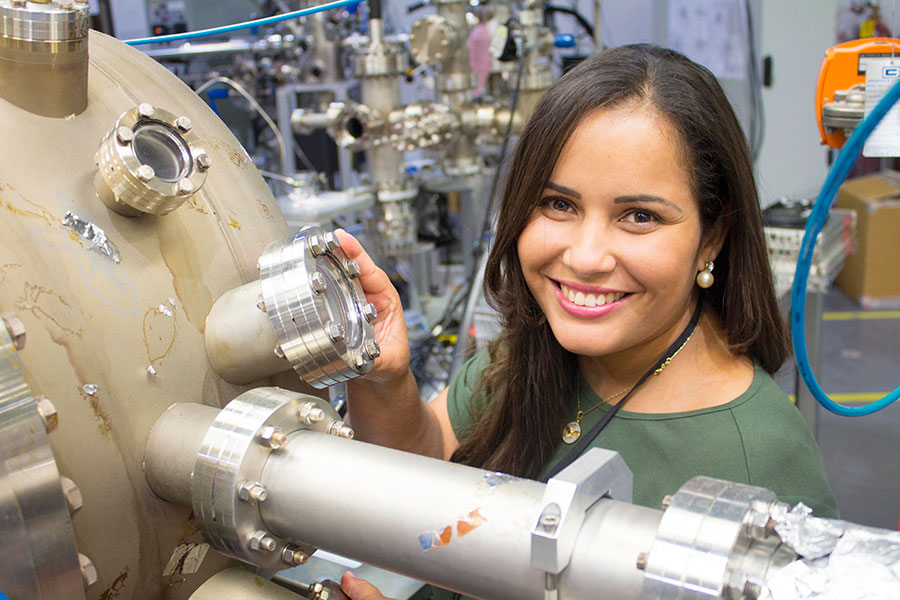 She spent evenings gazing at the stars, determined to explore the mysteries behind their pale light.
She spent evenings gazing at the stars, determined to explore the mysteries behind their pale light."I knew I wanted to be a scientist and that it would be my future. Science made my eyes shine," says Teixeira, a PhD student in materials science and engineering at the Federal University of Sergipe in Brazil.
Now, on a Brazilian government scholarship for a three-month research project at the Canadian Light Source (CLS) synchrotron, she is studying a different type of light-emitting body—"nanoscintillators."
These nanomaterials—just a nanometer (billionth of a metre) in size—absorb energy when exposed to a radiation source, and then briefly re-emit this energy through visible light. This makes them ideal for detecting radiation to help ensure human health and safety.
Larger-scale scintillators are currently used in medical imaging equipment such as PET scanners and gamma ray cameras which are used to diagnose cancer and other diseases. Other applications include new scientific instruments for radiation detection and X-ray security scanners for luggage checking and cargo inspection.
But scintillators are expensive to produce and are often made from toxic chemicals containing heavy metals.
Teixeira has developed a new cost-effective and environmentally friendly method to create scintillators, and as they are at the nano scale, they emit light more efficiently.
Her first challenge was to determine the right mix of components to create an environmentally safe nanoscintillator.
"I developed a hybrid process modifying the current methods used to synthesize scintillators," Teixeira says.
In her Brazilian lab, she mixed silica, a by-product of ceramics manufacturing, with non-toxic chemicals such as metallic salts, and added coconut water, the clear liquid inside young green coconuts. Coconut water, abundant in Brazil, acts as a natural solvent to dissolve the salts. Once heated, the mixture turned into a ceramic powder, which proved to be a good radiation detector.
To study the physical properties of these new nano-materials and how well they emit light, Teixeira came to the CLS synchrotron at the University of Saskatchewan. The CLS is home to the only beamline in North America with the exact energy range needed for her experiments.
At the CLS, Teixeira exposed the nanoscintillators to various ranges of light to study their radiation detection potential.
Though her research is still experimental, with further development, her luminescent nanoparticle powder may have many biomedical applications.
"Verônica's method may reduce the costs for production of scintillators," says Mário Valerio, her supervisor in Brazil.
Teixeira is supported by the Brazilian government's Science Without Borders program which aims to bring 12,000 Brazilian undergraduate, PhD and post-doctoral fellows to Canada by 2015.
The program covers airfare, housing and living costs, health insurance and, in some cases, tuition fees. Students return home with enriched technical expertise for their future careers.
"It's a great opportunity for young researchers," says Teixeira. "The program allows Brazil to advance science and technology, preparing tomorrow's great researchers with international experience. At the CLS, I learned new techniques which I will use in my post-doctoral project and my future professional life."
Inspired by her mother and grandmother, both teachers, Teixeira hopes to become a university professor and researcher in Brazil.
Federica Giannelli is an intern with the U of S research profile and impact unit. This article first ran as part of the 2013 Young Innovators series, an initiative of the U of S Research Profile office in partnership with the StarPhoenix.